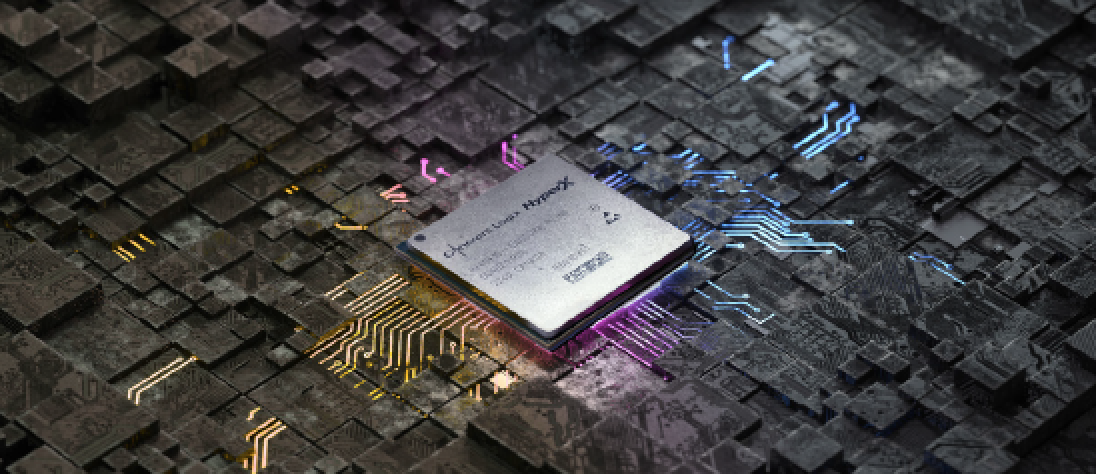Implications for satellite and terrestrial networks.
Traditional perimeter and edge-based cybersecurity deployment architectures have long been the bedrock of digital defense strategies. These systems have been effective in creating a protective boundary around an organization’s network, akin to building walls and moats around a castle to keep out intruders. However, the landscape of cyber threats has evolved significantly over the years, and just like walls in the face of modern warfare, these traditional approaches are struggling to keep up.

Cyber threats are becoming increasingly sophisticated and adaptive in today’s digital age. Hackers and malicious actors continually devise new techniques and tools to breach network defenses. From phishing attacks to advanced persistent threats (APTs), the arsenal of cyber threats has expanded exponentially.
Moreover, the threat surface has expanded well beyond the coverage of perimeter-based cybersecurity and will only continue to expand with the proliferation of connected devices, making it even more challenging to protect against intrusions.
Adding to this complexity is the aging infrastructure of many large connected industrial systems. These systems, which are the backbone of critical sectors such as energy, manufacturing, and transportation, were designed in an era when cybersecurity was not a primary concern.
As a result, they often lack the necessary security features to withstand modern cyber threats. Their outdated components and protocols make them vulnerable targets for attackers looking to exploit weaknesses in these systems.
A defense-in-depth approach is required for today’s threat landscape. Instead of relying solely on perimeter defenses, this approach advocates multiple layers of security measures throughout the network architecture. Traditional firewalls, intrusion detection systems, robust authentication mechanisms, encryption, continuous monitoring, and incident response plans are still required, but they are no longer sufficient to meet the threat.
In the context of satellite and terrestrial systems, this shift requires a fundamental rethink of how these systems are designed and constructed. It means integrating security features from the ground up rather than tacking them on as an afterthought. It involves considering security implications at every stage of system development, from hardware and software design to data transmission and storage.

Coherent cyber network security.
The Challenge
The contemporary cybersecurity landscape is marked by a daunting set of challenges, primarily driven by the sheer scale of distributed networked endpoints, users, systems, cloud workloads, and data communications that require protection. This complexity is further compounded by the relentless evolution of multi-layered cyberattacks. Consequently, there is an urgent need for a fresh and adaptive approach to cybersecurity that can effectively contend with these rapidly changing dynamics.
One significant catalyst for this shift has been the post- COVID-19 era, which witnessed a seismic transformation in organizations’ operations. Remote work and mobility have become the norm, affecting not only commercial enterprises but also government and military entities. This fundamental change has expanded the attack surface exponentially. With employees accessing corporate networks and sensitive data from various locations and devices, the traditional security perimeter has become porous and difficult to defend.
Consider the scenario where a trusted employee’s laptop becomes infected with ransomware while working remotely or on the road. Initially, this infection may go unnoticed, lying dormant within the device. However, when the employee eventually returns to the office and connects to the corporate network, they inadvertently bring the infection behind the organization’s firewall. Suddenly, the organization finds itself penetrated and paralyzed, with critical data encrypted and inaccessible.
Defense In Depth
The concept of defense in depth is a strategy deeply ingrained in the mindset of any seasoned warfighter. It draws upon a fundamental principle of warfare: to protect and secure one’s assets effectively, you must layer your defenses, enable these layers to support one another, and plan for resilience that extends beyond the initial breach.
This approach recognizes the inherent limitations of relying on a single defensive measure and underscores the importance of adopting a multi-layered, holistic strategy to ensure robust and comprehensive protection. In the realm of cybersecurity, this strategy is equally critical. Relying solely on a single security measure, such as a perimeter firewall, is akin to leaving a single wall to protect a castle. It is insufficient to provide adequate protection in today’s dynamic threat landscape. Instead, the defense in depth approach advocates for a multifaceted defense system that combines various security controls and defensive technologies.
In contrast to traditional cybersecurity approaches that primarily focus on measures like perimeter firewalls, intrusion detection systems, encryption, access controls, and regular security audits, the defense in depth approach takes a more comprehensive and proactive stance. It extends protection beyond the network perimeter and strongly emphasizes safeguarding each individual asset within the organization.
Resilience is achieved as/when these new lines of defense take up the load and ideally confound the adversary with unexpected challenges.
Defense in depth involves augmenting existing security approaches by deploying specialized security software for each asset, adding in-built remediation capabilities to enable continued operations in the presence of a threat or in a post-threat environment, and establishing a framework for cooperative defense across assets. This approach addresses the reality of threat surface expansion, and proactively equips our technology assets to survive and respond.
Inevitably, even the most robust defenses may be breached at some point. When this occurs, our technology assets must have pre-programmed recovery or contingency operations in place to ensure that their mission can continue, largely uncompromised.
Implications For Satellite Network Design
The implications for satellite network design when implementing a defense in depth strategy are far-reaching and reflective of the evolving nature of cybersecurity threats. This strategy calls for integrating robust cybersecurity and attack remediation functions within each satellite network component, including both ground terminals and satellites themselves.

First and foremost, implementing cybersecurity functions within the satellite’s internal network architecture is essential. These cybersecurity functions are best integrated as additional software within the networking subsystem with coverage for both up/downlink and satellite-to-satellite communications.
Some existing satellite systems will have processing power and resource limitations that preclude this, but this capability should become a standard requirement in new builds. In such cases, dedicated additional processors may be necessary to handle the demands of cybersecurity functions, ensuring that security remains an integral part of the network’s design.
In addition to cybersecurity measures, the strategy emphasizes the importance of attack remediation logic. The location of this logic may vary depending on the approach, and it can be integrated into the network subsystem or be a core function of the satellite’s overall operation. Regardless of its placement, the effectiveness of attack remediation logic is contingent on being onboard the satellite and built into the ground terminals, allowing for a swift response to detected threats.
A significant challenge in implementing a defense in depth strategy for satellite networks is the rapidly evolving state of cybersecurity. New threats and vulnerabilities emerge daily, necessitating continuous improvements to defensive systems. This involves both incorporating the latest threat signatures and enhancing and improving detection capabilities to adapt to the evolving threat surface.
To address this challenge effectively, the software responsible for cybersecurity must run on fully reprogrammable and reconfigurable processors optimized for high-speed processing of streaming data. Given the rate and type of changes, executing cybersecurity in an ASIC or even an FPGA will be impractical.
While implementing these changes may be difficult or even impossible for existing satellite fleets, they should be considered baseline requirements for new satellite launches. Fortunately, there is good news on the horizon. Software-defined satellites based on reprogrammable and reconfigurable processors are becoming increasingly common.
This trend is driven by the need to continuously evolve capabilities, extend mission lifetimes, and to adapt to changing mission requirements. In such software-defined satellite architectures, cybersecurity measures can be treated as just another application in the satellite’s software ecosystem, running side-by-side with existing network and control software.
This adaptability and agility offer a promising path forward for enhancing the security of satellite networks in the face of evolving cybersecurity challenges.
Conclusion
The concept of defense in depth, inspired by military strategies, underscores the importance of layering defenses, mutual support among these layers, and planning for resilience beyond the initial breach. In the context of satellite network design, this strategy demands a holistic approach to security.

Cybersecurity functions must be integrated at various levels, including ground terminals and onboard satellites. It’s essential to cover all communication channels, encompassing uplink and downlink communications and satellite-to-satellite exchanges. Attack remediation logic is critical and should be onboard for swift threat response.
However, a significant challenge arises from the dynamic nature of cybersecurity threats. Defensive systems must continuously adapt and update, incorporating the latest threat signatures and enhanced detection capabilities. Reprogrammable and reconfigurable processors, rather than fixed ASICs or FPGAs, are essential for this adaptability.
While implementing these changes may be challenging for existing satellite fleets, they are becoming baseline requirements for new satellite launches. The advent of software-defined satellites, based on reprogrammable processors, offers a promising solution. In these architectures, cybersecurity measures can be seamlessly integrated as one more application, running alongside existing software.

Walt Gall
This adaptability ensures that satellite networks can stay ahead of evolving threats and continue to provide reliable and secure communication services in our increasingly interconnected world.
www.coherentlogix.com
Author Walt Gall, Ph.D., is the Chief Executive Officer at Coherent Logix.



